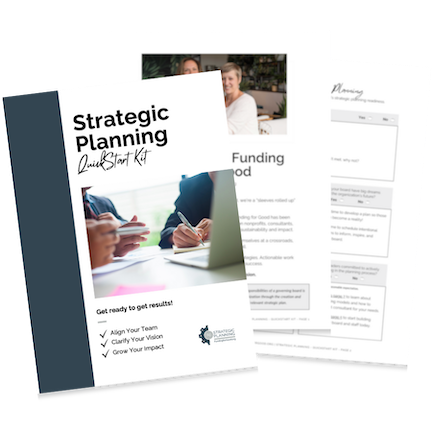Often the idea of becoming a great leader—or helping other team members become great leaders—can feel out of reach. We’re all busy running from one project to the next, from Zoom call to Zoom call. Who has time to set aside several whole days for off-site leadership training?
Plus, there are so many different leadership models, what does great leadership even look like?
Here at Funding for Good, we recommend turning the question on its head. The aim shouldn’t be some amorphous goal of “great leadership.” Instead, we recommend prioritizing high-functioning leadership.
What is High-Functioning Leadership?
High-functioning leaders know their goals, regularly assess their progress, and adapt their strategies to create successful outcomes. High-functioning leaders are equipped with core leadership skills—like project and time management. They’re also committed to the success of their colleagues and direct reports.
Unlike “great leadership,” high-functioning leadership can be measured and evaluated—making it that much easier to cultivate.
Harnessing the Power of Goals, Feedback, and Acknowledgment
Cultivating high-functioning leadership starts with setting measurable goals and objectives. We recommend using Key Performance Indicators (or KPIs). Then begins the most critical part: making KPIs and evaluation part of your daily work.
Integrating ongoing evaluation and learning into your work and management practices can yield incredible dividends. In practice, this often comes in the guise of feedback—something that employees increasingly want:
- 65% of employees desire more feedback.
- Companies that give feedback consistently report turnover rates that are 14.9% lower than for employees who receive no feedback.
- 69% of employees say they would work harder if they felt their efforts were being recognized through feedback.
Staff members want feedback for good reason. Feedback is part of how we learn and grow. Research shows that:
When someone is always learning new things at work, they are literally ten times more likely to be inspired to give their best effort at work.
It’s worth noting that feedback can be both positive and negative.
It’s easy to get caught up in the idea that feedback is what you give someone who is struggling. But feedback can be even more powerful when it’s about what is working—and why. Research suggests that the more timely, specific, goal-oriented, and process-focused feedback is, the more effective it will be.
Performance Management Shouldn’t Be an Afterthought
Nonprofit human resources is notoriously under-resourced. Unfortunately, for many in the sector, evaluation and feedback only happen once a year: when it’s time to fill out an antiquated performance management form. Data from Nonprofit HR reinforces this reality:
In one survey, 65 percent of employees believe that “performance management practices are still often about top-down control—and are focused on assessment of the past rather than development for the future.
If our goal is to develop high-functioning leadership within our organizations, then it’s time to make the transition from considering performance management an afterthought to treating feedback as a daily practice and a critical part of staff success.
Ready to Strengthen Your Team’s Leadership?
If you’re ready to integrate goal setting, evaluation, and communication into your organization, check out Funding for Good’s May 2023 webinar, Developing High-Functioning Leaders.



